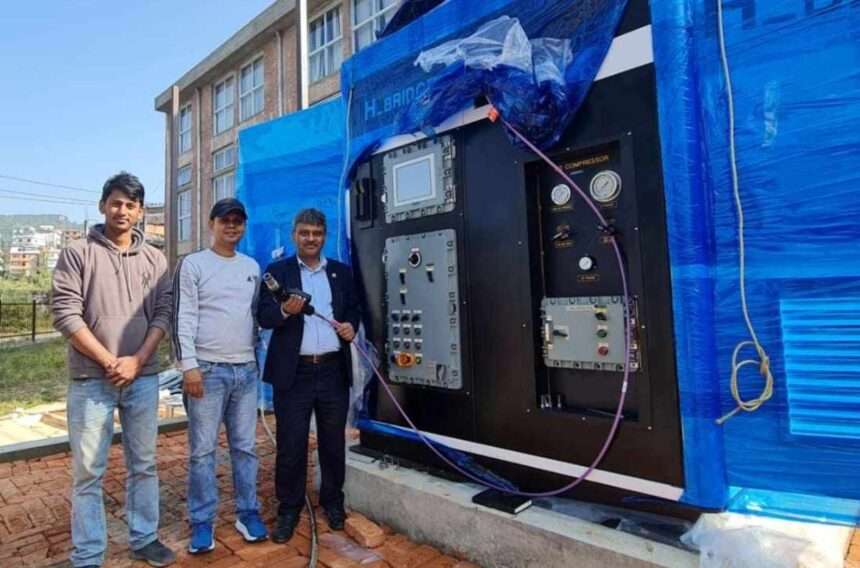In a remarkable feat of innovation and progress, Nepal has achieved a significant milestone by successfully producing hydrogen fuel and initiating vehicle refueling operations. Kathmandu University’s laboratory, in collaboration with Nepal Oil Corporation, has spearheaded this groundbreaking endeavor, importing hydrogen vehicles and refueling equipment from South Korea.
The production of hydrogen fuel involves the utilization of electricity, and Nepal’s abundance of hydroelectric resources positions it favorably in this emerging global market for clean energy solutions.

According to Bishnu Pandey who is conducting research at the Green Hydrogen Lab, hydrogen can be generated from water and stored. He emphasized the potential for utilizing Nepal’s water and electricity to produce both hydrogen and methane.
While the government has formulated a policy regarding hydrogen utilization, there is a critical need for the enactment of hydrogen-specific laws and regulations to formally recognize hydrogen as a viable fuel source in Nepal.
Despite the introduction of hydrogen vehicles in Nepal, challenges such as the absence of necessary legislation for issuing vehicle number plates persist.

“Nepal is poised to introduce hydrogen buses and refueling equipment. However, if we resort to importing hydrogen fuel, it contradicts our aim of achieving fuel self-sufficiency. Refueling stations merely require water and electricity, resources abundant in Nepal. The question arises: will we produce hydrogen domestically or continue importing it akin to our reliance on diesel from India?” – Dr. Biraj Singh Thapa, Associate Professor, DoME, Kathmandu University
Dr. Thapa emphasized Nepal’s potential to lead in hydrogen production by leveraging its abundant water and electricity resources.
The successful production of hydrogen and commencement of refueling operations mark a significant step towards realizing Nepal’s vision for a sustainable and environmentally conscious future.
Dr. Thapa mentioned that the Hyundai Nexo car was imported from Korea five months earlier with support from the NOC, while a Hydrogen Refueling Center was set up at the university with assistance from a Korean Hydrogen Production Company. The NOC allocated Rs. 50 million to the university for this endeavor.
Furthermore, Kathmandu University’s ambitious endeavor to produce hydrogen domestically and power vehicles with it has come to fruition after two years of dedicated research and experimentation in green hydrogen production and utilization.
The establishment of a hydrogen refueling center at the university, supported by Nepal Oil Corporation, has enabled the production of hydrogen fuel, paving the way for its utilization in vehicles.

With successful testing of the hydrogen refueling station and the operation of vehicles using green hydrogen produced in Nepal, it has been confirmed that commercial production of hydrogen vehicles is viable.
As per Dr. Thapa’s explanation, the production of one kilogram of hydrogen from the hydrogen production facility at KU requires approximately 10 liters of water and 40 to 45 units of electricity. Additionally, he mentioned that filling Hyundai Nexo cars with five kilograms of hydrogen within KU’s premises enables them to travel up to 650 kilometers.
To facilitate the establishment of the refueling center, a budget of $33,000 has been allocated from the support fund provided to KU, amounting to approximately Rs. 13 million.
KU’s objective is to initiate a pilot project for the establishment of hydrogen refueling centers, enabling the refueling of 30 to 35 hydrogen vehicles, while also advancing policies and procedures related to hydrogen in Nepal.
As the world increasingly embraces green hydrogen as an alternative to traditional petroleum products, Nepal’s achievement opens doors for the adoption of hydrogen-powered transportation, including heavy vehicles such as buses and trucks, contributing to a cleaner and more sustainable future.









